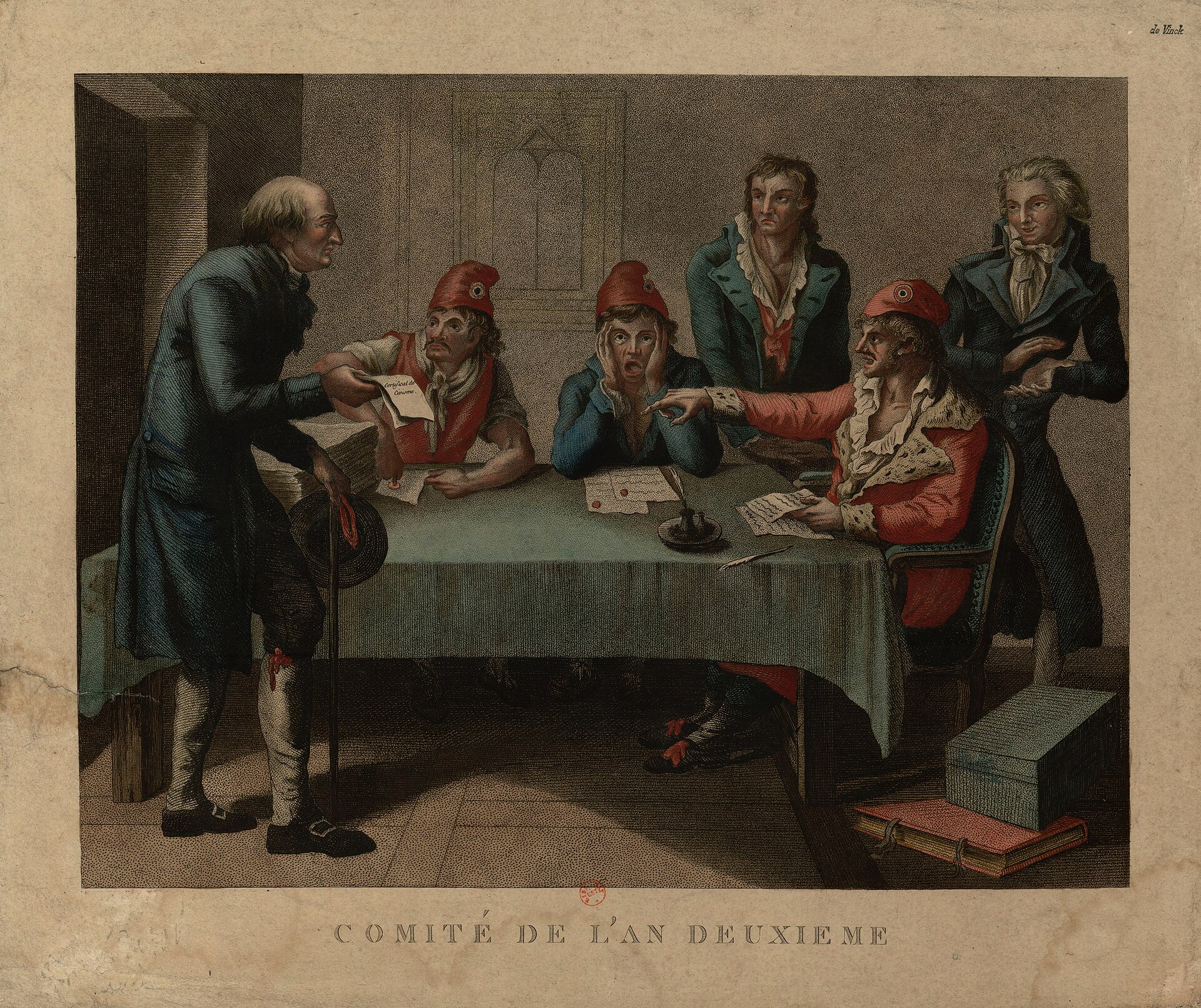From Janet Biehl, The Politics of Social Ecology: Libertarian Municipalism:
In France, the Parisian sectional assemblies of 1793 were the most democratic and radical political institutions to emerge during the course of the Great Revolution.
In preparation for the epochal meeting of the Estates General in Versailles in 1789, the French monarchy was obliged to establish electoral districts throughout France, where commoners could gather in assemblies to choose their deputies for the Third Estate—or rather, to choose an intermediate set of electors, who in turn would choose the deputies, so disinclined was the monarchy to allow even propertied commoners to vote directly. Sixty district assemblies were constituted in Paris, Where they duly carried out their task. But once they chose their deputies, the Parisian assemblies persisted in meeting— even though they had lost their legal reason for existence. Thus, even as the Estates General—soon renamed the National Assembly—was meeting in Versailles, the Parisian district assemblies kept meeting regularly as quasi-legal bodies, acting as guardians of their limited freedoms in the fast-moving political situation.
After December 1789 such assemblies became the legal basis for municipal government in all the large French cities. The National Assembly, and later the Constituent Assembly that followed it, reconfigured Paris’s sixty districts into forty-eight sections; all the other large French cities—Lyons and Marseilles, Bordeaux and Toulouse—were divided into sections as well, with assemblies to look after community affairs. Collectively the various sectional assemblies in a city exercised control over that city’s central municipal authority, or commune.
As the revolution unfolded, about 44,000 autonomous local communes—the large ones controlled by sectional assemblies—occupied much of the political realm in France, concerning themselves not only with local but with national issues. They acquired the power to call out their own branches of the National Guard, and in both structure and political content, they became increasing democratic and radical. In Paris the sectional assemblies even opened their doors to all adult males—and in some cases to women—regardless of property or status qualifications. Indeed, the Parisian sections themselves formed the basis for an extremely radical direct civic democracy.
This sectional movement, which matured in Paris in 1792 and 1793, was a self-conscious direct-democratic phenomenon. Regardless of whether its members were politically radical, each popular assembly formed the fundamental deliberative and decision-making body of its section. Ideologically, the sectionnaires regarded popular sovereignty as an inalienable right to be enjoyed by all citizens, one that could not to be preempted by representatives to national assemblies. Meeting in expropriated Chapels and churches, each sectional assembly elected six deputies to the Paris Commune, one of whose major functions was to coordinate all the sections in the city.
Each section was also possessed of a variety of committees that performed such functions as police, supply, finance, and neighbourhood surveillance. Of paramount importance, each section also had its own battalion of the National Guard, including an artillery unit, over which it exercised complete control and whose movements it alone could authorize. The sectionnaires interested themselves passionately in these military units: assembly meetings in which National Guard officers were elected drew the greatest attendance, greater even than those in which civilian officials were elected.
In 1793, during the height of the Parisian radical democracy, sectional life was vibrant, disputatious, and earthy. Periods of crisis might attract a thousand citizens or more to an assembly meeting, often crowding the hall to the bursting point, while debates were often vigorous, the various factions contending With one another heatedly. Some sectional assemblies were genuine political battlegrounds. Within a particular section, citizens’ interests might vary widely according to economic status, ideology, and social background—during even the most militant periods of the revolution, royalists and moderates still turned out for meetings, as well as extreme radicals. Furious confrontations often exploded into threats, shouts, and mutual recrimination, not to speak of fistfights.
The radical sectionnaires who occupied this political realm were the same people Who invaded the Tuileries in August 1792 and deposed the king, leading to his execution; and who teetered on the brink of a radical insurrection against the Convention in June 1793. (Had it been successful, this insurrection might have given full power to a national confederation of sectional assemblies.) It was during this last period of ferment that the radical democrat Jean Varlet, Whose political home was the section called Droits de l’Homme, tried to organize delegates from each section into a counterpower that would constitute a “Commune of communes,” a confederation of cities and towns (communes) over all of France, to supplant the National Convention. In effect, the radical sectionnaires stood at forefront of the revolutionary movement in France. It was no doubt for this reason that. their leaders were among the first to be arrested by the Jacobin regime when it came to power in June 1793.
Derived from the district assemblies, the sectional assemblies had elbowed their way into existence in flat defiance of the Nation-State that created them. They went on to provide the institutional structure for an extraordinary direct democracy, and as such they constitute yet another important moment in that abiding tradition. For libertarian municipalism they have a particular importance, since they were not only situated in the largest city on the European continent but played a. driving role in radicalizing one of the great revolutions in history.
